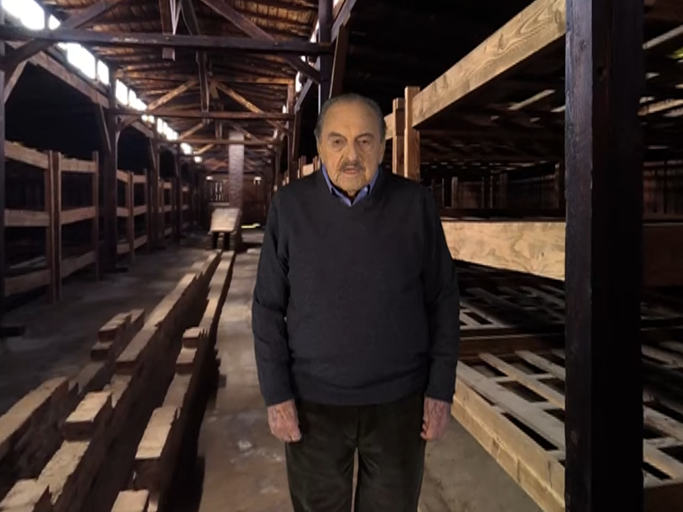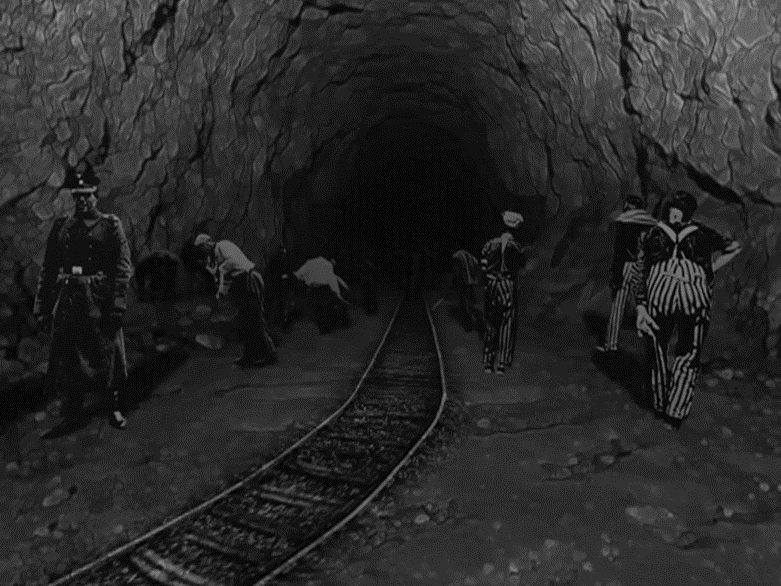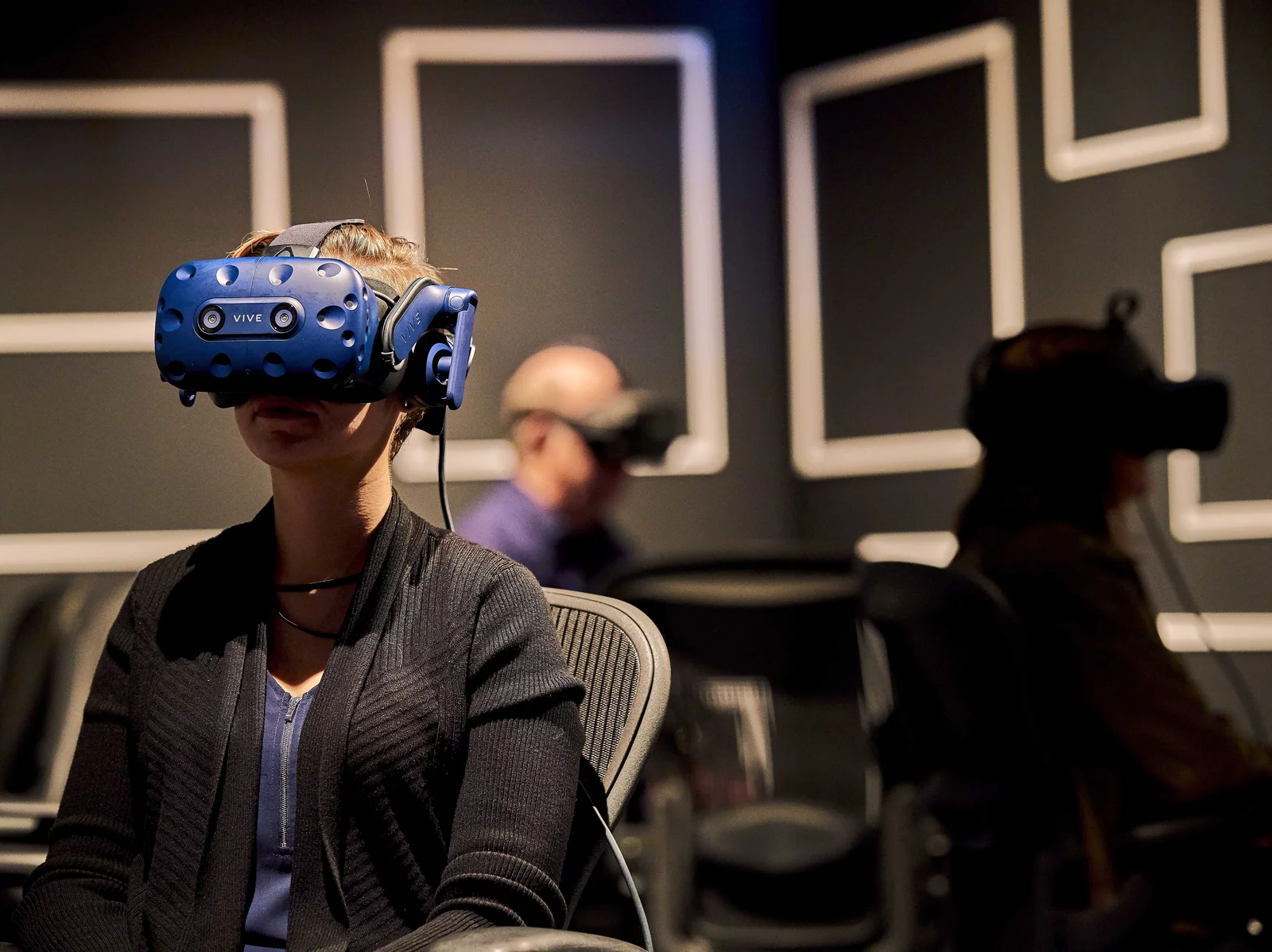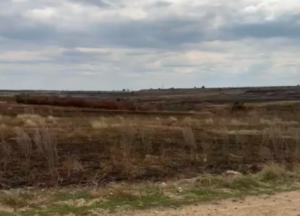Most Holocaust survivors are in their 80s or 90s. With every year, fewer remain to tell us their stories. So museums and archives are using advanced technologies to preserve their testimonies and introduce them to new generations.
For example, at the Illinois Holocaust Museum and Education Center in Skokie, you can slip on a virtual reality headset and enter the world of survivor George Brent, at the moment the terrified teenager stepped off a boxcar at Auschwitz-Birkenau in 1944.
“There was a great deal of shouting –’Raus, raus, schnell, schnell! Leave everything behind!'” he says in the 12-minute film. It’s part of the exhibit “The Journey Back: A VR Experience,” which takes viewers from that first heartbreaking separation from his family to the grueling slave labor Brent was later forced to perform in the mines of the Ebensee concentration camp in Austria.
Brent, now 93 years old, is gentle and good-natured as he recalls making his part of “The Journey Back” on a Zoom call with NPR. He was too fragile to make a trip to Europe, he says, so the VR film based on his testimony used green screens to put him in some of the places he describes, such as the men’s concentration camp barracks and the loading docks at Auschwitz-Birkenau.

As you turn around, wearing the headset, you’ll also find yourself transported inside of charcoal drawings that communicate the darkness and dread of his experience in Nazi-run camps and quarries.

“It gives me the chills when I think about it, that this technology became available just in time to capture these stories,” says Susan Abrams, CEO of the Illinois Holocaust Museum. For years, she says, numerous survivors would tell their stories to visitors in person. The museum began making “The Journey Back” in 2017 and spent more than seven figures recreating Brent’s testimony as a virtual reality experience. The story of another survivor, Fritzie Fritzshall, is told as well, in a separate movie. (A former president of the museum, Fritzshall died at age 91 soon after her VR testimony was completed).
But employing new technology to capture survivors’ stories is nothing new, says UCLA professor Todd Presner, who studies the Holocaust and digital culture.
He describes the work of David Boder, an American psychology professor who used then- cutting edge technology to record testimonies starting in 1946.
“He brought this wire recorder to displaced persons camps throughout Europe, interviewing survivors in multiple languages and really, the first one to record their voices,” he says. (Those interviews have been archived online by the Illinois Institute of Technology as Voices of the Holocaust).
The interviews were especially powerful, Presner adds, at a time when newsreels were largely silent, and images of survivors were seen, not heard. Likewise, he says, “The Journey Back: A VR Experience” makes the Holocaust feel immediate, especially for people who’ve never had the opportunity to visit places like the Auschwitz-Birkenau memorial and museum in Poland.
But virtual reality is not the only technology transforming how we see—and increasingly, interact with — survivors’ testimonies. USC Shoah Foundation, founded by director Steven Spielberg in 1994, is one of the largest digital collections of survivor testimonies in the world. Right now, its interim executive director Kori Street is standing in its quiet lobby, facing a life-sized screen of an elderly man in a pink upholstered chair.
The man, Pinchas Gutter, looks a little like the actor Anthony Hopkins. Gutter, who survived six concentration camps, is still living, in Toronto Canada. Onscreen, Gutter blinks and appears to compose himself. “I was born in 1932, in Łódź,” he begins. The artificial intelligence that enables Gutter to answer dozens of questions took a solid week of filming and seemingly endless inquiries from various interlocutors, including children.
Young people, Street says, tend to be braver in asking hard questions to a digitally-rendered survivor rather than an in-person senior citizen, whose feelings they often want to protect. And interactive experiences like this one are more compelling to many visitors than just passively watching the Foundation’s massive archival collection of testimonies. “There’s no reason why we can’t take these 2D testimonies, of which we have 55,000, and retrofit them to work with AI,” Street says.
As to where the technology may take things next, Street acknowledges all those wildly popular exhibits featuring the work of wildly popular artists. “There’s a lot of debate about a lot of these immersive experiences. The Van Gogh one, most recently the Frida Kahlo one. People either love [them] or they don’t but museums — to get people in, they need to keep on this.”
The idea of “Auschwitz: The Immersive Experience” might seem tasteless at best and Westworld at worst. But as a way into Holocaust history, an immersive experience could be presented with thoughtfulness, authenticity and care, says Sarah Lumbard. She’s the director of museum experience and digital media at the United States Holocaust Memorial Museum.
“In VR, we’ve looked at– how do you explain the experience of the Warsaw ghetto,” she says. “How might we explain that, really transporting you to the ghetto? And specifically, looking at how do you see … and bring to life one group’s effort to preserve evidence that was later found after the war? This is something you do to create a whole new world, a world that doesn’t exist, which is why gamers use it.”
“There are really excellent applications of game theory to learning about the Holocaust without it devolving into something that is dangerous, that is dark tourism,” says Kori Street.
At a time when hate crimes have risen sharply and members of Congress have trivialized survivors’ experiences, Holocaust museum directors say their stories are more important than ever. And new technologies and new tools—used correctly- can bring that history home.




